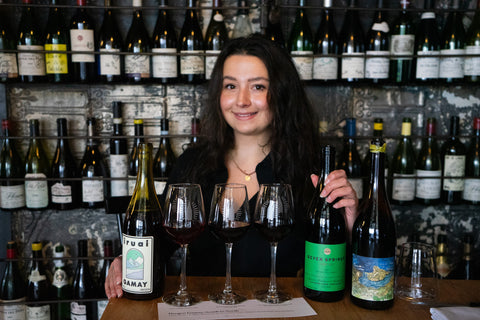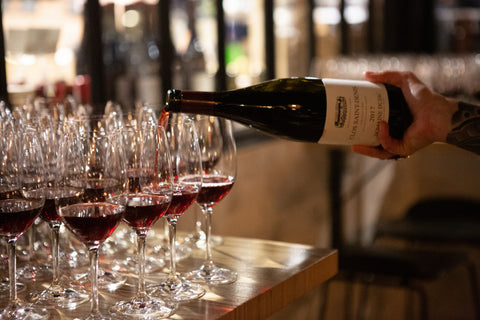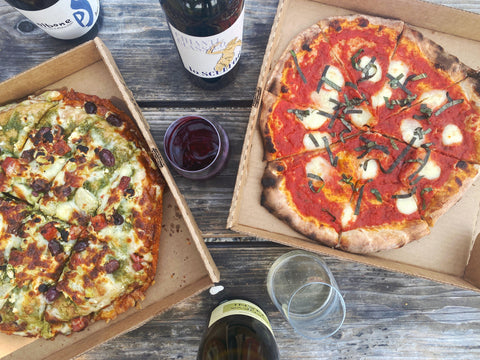Want to get a taste of the future? Then you've got to tune into the winemakers.
When we saw that a handful of our favorite Oregon winemakers were getting into Gamay, we knew that something was shifting. Maybe it began as an experiment, but it seems like Gamay might start taking up more space in Oregon as climate change makes growing finicky Pinot Noir more difficult.
Liza Morgioni of Dedalus says she became more interested in Oregon Gamay when she saw that producers like Evening Land, Hiyu, and Iruai were all working with the variety. “All of these producers think it’s worthwhile to be making Gamay in Oregon. They know the classic expressions of Gamay in Beaujolais and have put time and energy behind exploring that grape in the context of the State of Oregon, so we should be listening to them and checking out these wines.”
The variety was first planted in Oregon in the 980s, after David Adelsheim, founder of Adelsheim Winery, brought back clones from Burgundy after his internship in the Beaune. He had been told that Gamay could do quite well in Oregon’s acidic soils, and it did. But just as in Burgundy, Pinot Noir proved more popular, and Gamay was relegated to the sidelines.
That is until climate change started impacting the state more and more. While a changing climate wreaks havoc in some winegrowing areas, it can be oddly beneficial for others. In Oregon, climate change has made it even more difficult to grow finicky Pinot Noir, but proved a boon for easygoing Gamay.
Liza says she looks at Oregon Gamay as a good analog for Beaujolais; If you like a good cru Beaujo, you’re probably going to find something to love in Oregon Gamay. “I think people might find some similarities,” Liza says, “but there are also major differences with the soils and terroir, not just from France to Oregon but within the state. You can taste a southern Oregon Gamay vs. one from the Gorge area and they will be so different.”
If they have one thing in common, it’s the unique ability to be both serious and fun. Good Beaujolais is seriously fun, and the best Oregon Gamay rides that same thin line. “If you had to name one thing they have in common,” Liza says, “It’s that spirit. They’re food-friendly, delicious, and chillable — these wines aren’t just easy to drink, they’re easy to love.”



